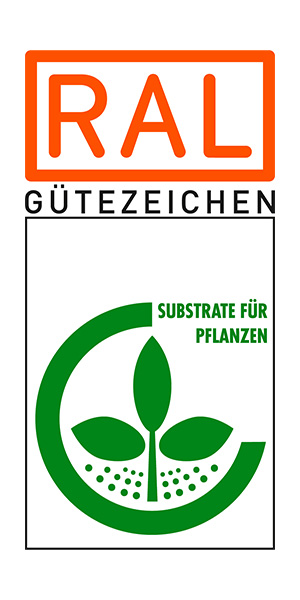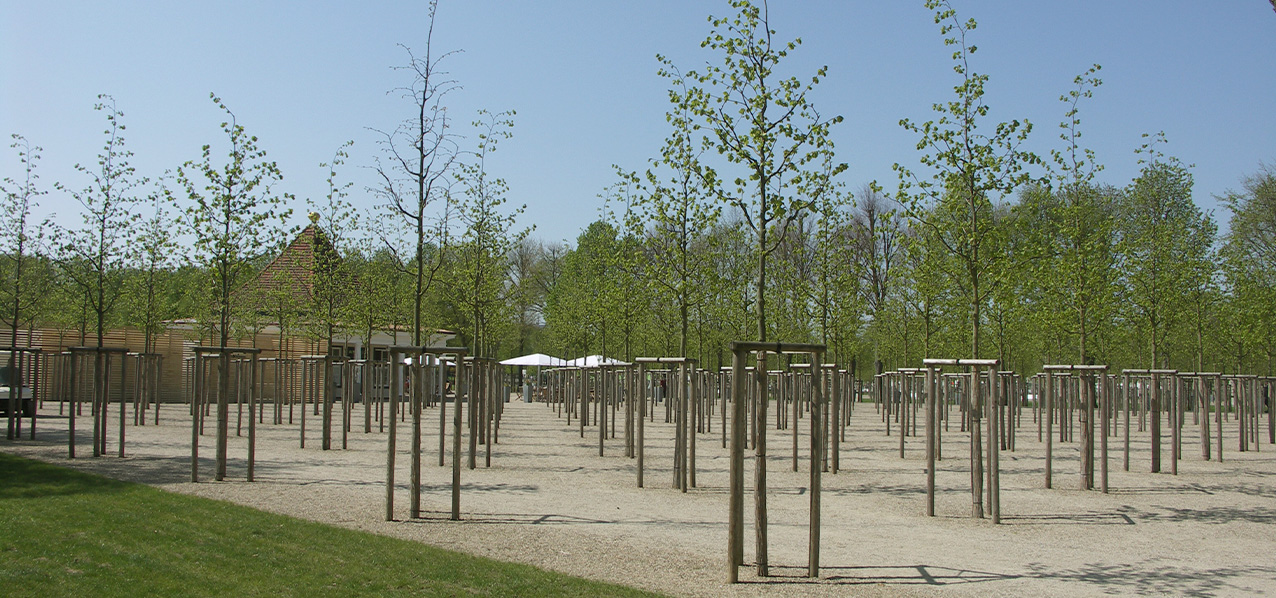Quality criteria – Substrates for tree planting
RAL-certified substrates for tree planting for healthy root growth in difficult locations
RAL-certified substrates for tree planting generally consist of mineral products with a low amount of organic matter. They are often used to fill planting holes in tree plantings along roadsides. There are two different applications:
Substrates for tree planting for open, non-covered planting holes (planting hole type 1). The tree pit surface is usually open and its surface is only subject to minimal disturbance.
Substrates for tree planting for covered, load-bearing planting holes (planting hole type 2). In this case, the backfill is not only the substrate for the tree, but also the subsoil below the pavement.
The soil skeleton must be permanently stable and meet high requirements because the substrate must provide an adequate environment for the tree to grow in for many years. Consequently, physical parameters play an important role. The chemical constants must promote healthy root development in difficult locations and are therefore controlled accordingly in the RAL testing procedures.
Heavy metal contents are also monitored in RAL-certified substrates for tree planting. This prevents polluted raw material from being used.
The quality assurance was dawn up in accordance with the FLL regulations “Empfehlungen für Baumpflanzungen” (“Recommendations for Tree Plantings“) (FLL =Forschungsgesellschaft Landschaftsentwicklung, Landschaftsbau e.V. / German Research Society for Landscape Development and Landscape Design). Gütegemeinschaft Substrate für Pflanzen e.V. significantly expanded the FLL requirements by incorporating requirements for extensive and regular self-monitoring and external monitoring.
RAL-certified substrates for tree planting offer both parties inviting to tender and users a high degree of reliability.
Download quality criteria Substrates for tree planting
Quality criteria – Substrates for tree planting
RAL-certified substrates for tree planting for healthy root growth in difficult locations
RAL-certified substrates for tree planting generally consist of mineral products with a low amount of organic matter. They are often used to fill planting holes in tree plantings along roadsides. There are two different applications:
Substrates for tree planting for open, non-covered planting holes (planting hole type 1). The tree pit surface is usually open and its surface is only subject to minimal disturbance.
Substrates for tree planting for covered, load-bearing planting holes (planting hole type 2). In this case, the backfill is not only the substrate for the tree, but also the subsoil below the pavement.
The soil skeleton must be permanently stable and meet high requirements because the substrate must provide an adequate environment for the tree to grow in for many years. Consequently, physical parameters play an important role. The chemical constants must promote healthy root development in difficult locations and are therefore controlled accordingly in the RAL testing procedures.
Heavy metal contents are also monitored in RAL-certified substrates for tree planting. This prevents polluted raw material from being used.
The quality assurance was dawn up in accordance with the FLL regulations “Empfehlungen für Baumpflanzungen” (“Recommendations for Tree Plantings“) (FLL =Forschungsgesellschaft Landschaftsentwicklung, Landschaftsbau e.V. / German Research Society for Landscape Development and Landscape Design). Gütegemeinschaft Substrate für Pflanzen e.V. significantly expanded the FLL requirements by incorporating requirements for extensive and regular self-monitoring and external monitoring.
RAL-certified substrates for tree planting offer both parties inviting to tender and users a high degree of reliability.




